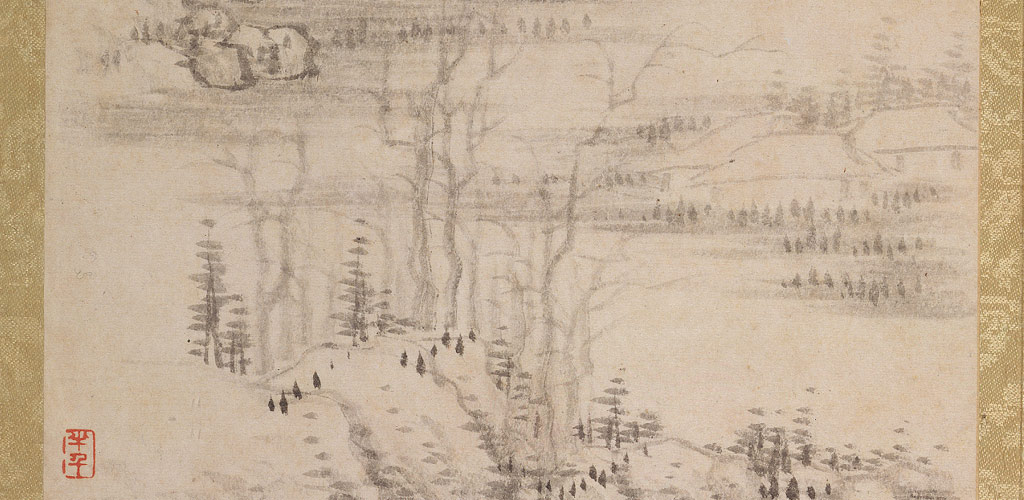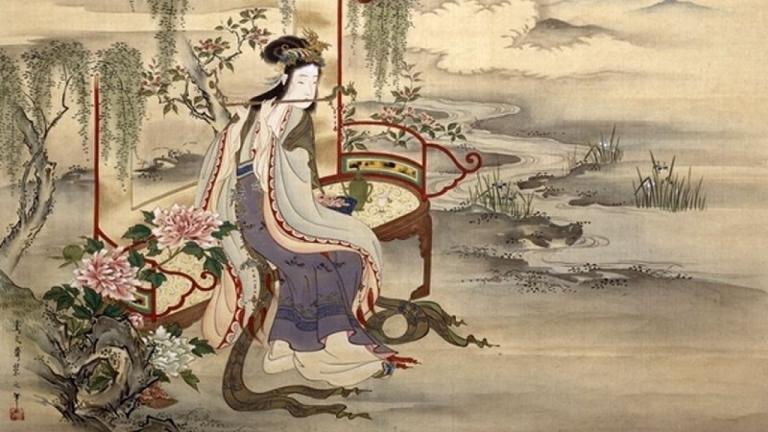Conservative and Innovative Paintings in Qing Dynasty
6 min readChinese painting history entered a new era when it came to Qing dynasty.On the one hand,some painters were really conservative and only followed the tradition.
Most of them buried themselves in ancient people’s painting works and practiced copying from their works.Their paintings were lack of life vitality and spirit oi the time.These painters were represented by the Four Wangs.Their paintings were appreciated by emperors of the time and were considered as the orthodox painting school.
On the other hand,there were many painters against the orthodox school and emphasized uniqueness and creativity.They mainly considered painting as a way to express their personal emotion and sentiment.They pointed out that”paintings need to be guided by the spirit of time”.They used delicate and individualized way of demonstration and their painting works were full of vitality and real taste of life.
These painters were represented by the Four Monks at the beginning of Qing dynasty and the Eight Eccentrics in Yangzhou.During Qianlong’s reign,some western painters,represented by Guiseppe Castiglione who visited China as missionaries.
They served the court and brought western painting into China.The special paintingskills and power of figure shaping in western painting had great impact on Chinese painters of the time.In late Qing dynasty,when Shanghai became the biggest industrial and commercial city in China,large number of painters gathered in Shanghai and made their living in selling paintings.They were known as the Shanghai Painting School.They combined the characteristics of different artistic forms like Chinese painting tradition,calligraphy,seal cutting,and metal and stone inscriptions into painting and absorbed the painting skills in western paintings,which largely strengthened the expressive power of Chinese painting.

Landscape Painting
Landscape paintings in Qing dynasty belonged to two entirely different styles,either the traditional style or the innovative style.At the beginning of Qing dynasty,the Four Wangs,Wu and Yun represented painters who specialized in copyingancient paintings.Although they were highly cultivated and excellent in painting,their aesthetic taste indulged them in the world of ancient people.They thought acapable painter should copy ancient painting works.Their paintings lacked noveltyand real taste of life.However,as were appreciated by the rulers and considered athe orthodox painting school of the time,their influence could be tracked in pre-modern and modern times.At the same time,there were four great monks and Zha Shibiao who belonged to the Xin’an Painting School.They had strong sense of nationality and expressed in their paintings their pain and sorrow of losing th Han’s regime.Their paintings varied in artistic style,yet were all with strong individuality and profound ideology significance.
In early Qing dynasty,there were also a group of painters left from Ming dynasty represented by the Eight Great Painters in Jinling(Nanjing today)led by Gong Xian.When Ming dynasty was taken place by Qing dynasty,they lived hermit life and refused to become officials anymore.Their painting works were realistic and mainly depicted the landscapes near Jinling.Besides,Yuan Jiang and Yuan Yao were famous for their architecture paintings depicting buildings and pavilions and landscapes,which were refined and delicate and with accurate shape proportion.The:used clear,bright and beautiful colors and the paintings were quite unique at thetime.The Shanghai Painting School in late Qing dynasty specialized in flower-and-bird painting and figure painting, yet their landscape paintings were also particular and worth mentioning.
Important painters of landscape painting in Qing dynasty are as follows: The Four Wangs, Wu and Yun, namely Wang Shimin(1592-1680), Wang Jian (1598-1677), Wang Hui(1632-1717), Wang Yuanqi(1642-1715), Wu Li(1632-1718) and Yun Shouping(1633-1690). They were also known as the Six Great Painters in early Qing dynasty. They all excelled in landscape painting and learned from Dong Yuan, Ju Ran and the Four Great Painters in Yuan dynasty. They were good at copying and their works lacked creativity though with specific characteristics of their own.
Wang Shiming learned painting from Huang Gongwang and devoted his whole life topainting. His landscape paintings were actually anamorphosis of Huang Gongwang’s landscape works. Wang Jian was a little bit different. He mainly followed Wang Meng, and used blue and green colored style and water ink style in painting. His paintings were simple and elegant with heavy and moist ink colors. Wang Hui followed many styles. He “adopted Yuan painters’ way of brush pen using, applied Song painters’
way of arrangement and absorbed Tang painters’ magnificence and charm”. He had traveled almost all over the country and observed all kinds of mountains and waterspersonally. Therefore his paintings were with more diversification and sense of life compared with paintings of the other three Wangs.

Wang Yuanqi was the grandson of Wang Shimin. His painting style was inherited from his family. He had practiced copying almost all famous paintings in Song and Yuan dynasties. His painting skills were so sound that he said his brush pen was like a diamond pestle. Wu Li knew how to combine different new features in hisbrushwork. He had sound painting skills as well. He was good at using heavy ink color, amassed dye, dry and moist colors together to make his painting dark, massy, gloomy, sleek and full of uniqueness. Yun Shouping specialized in landscape painting in his early years and shifted to flower painting later. His landscape paintings were refined with moist and sleek elegance.
The Four Monks refer to the four monk painters at the beginning of Qing dynasty including Zhu Da(Ba Da Shan Ren,1626-1705). Shi Tao, Shi Xi(1612-?), Jian Jiang(1610-1664). Zhu Da and Shi Tao were from Ming imperial family and became monk after the doom of Ming dynasty. They painted to express their pain and cynical feeling for the “doom of country and loss of family”. Their paintings were with strong individuality. The landscapes under their brush pen were different from ancient landscape paintings. They learned from ancient paintings in an innovative way. Shi Tao was the most prominent one among them. He believed painters should learn from nature. Painters would know how to “arrange the painting after observing all particular mountains”. He himself had traveled to all over the country and climbed famous mountains like Huangshan Mountain for many times. He settled down in Yangzhou in his later years. Abundant life experience endowed him with a broaden view and breadth of mind. His paintings followed various painters and absorbed theiradvantages, aiming at “learning from ancient paintings to create better paintings of the time.”Landscapes in his paintings were in thousands of different shapes andfull of diversification. They were always arranged in a new way with vigor, which influenced pre-modern and modern painting greatly.
The Eight Great Painters in Jinling, namely Gong Xian, Fan Qi, Wu Hong, Gao Cen, Zou Ji, Ye Xin, Hu Zao and Xie Sun, refer to the eight painters of landscape painting who played active roles in Jinling (Nanjing in Jiangsu today) in late Ming dynasty and early Qing dynasty. They also inherited from ancient painters, but they paid more attention to learning from nature. Their paintings were mainly about natural landscapes around Jinling. Their landscape paintings were arranged in a ful.
and dense way with many mountain peeks, rivers flowing through, trees and bushes, houses hided in the forest. The whole picture created an atmosphere of remote, tranquil and abstruse nature. Among them, Gong Xian was most eminent, He Startedwith learning from painters in the Five Dynasties, Song and Yuan dynasties. His mountains, rocks and trees were depicted by middle sized strokes which were heavy, skillful and vigorous. He used accumulated water ink to make the light strokes heavier and heavier. Thus the whole painting appeared to be massy, gloomy,
luxuriant, prosperous and revealing profound artistic conception, which successfully demonstrated the flourishing, moist, remote, tranquil, clear and beautifulcharacteristics of south of the Yangtze River region China landscapes.









